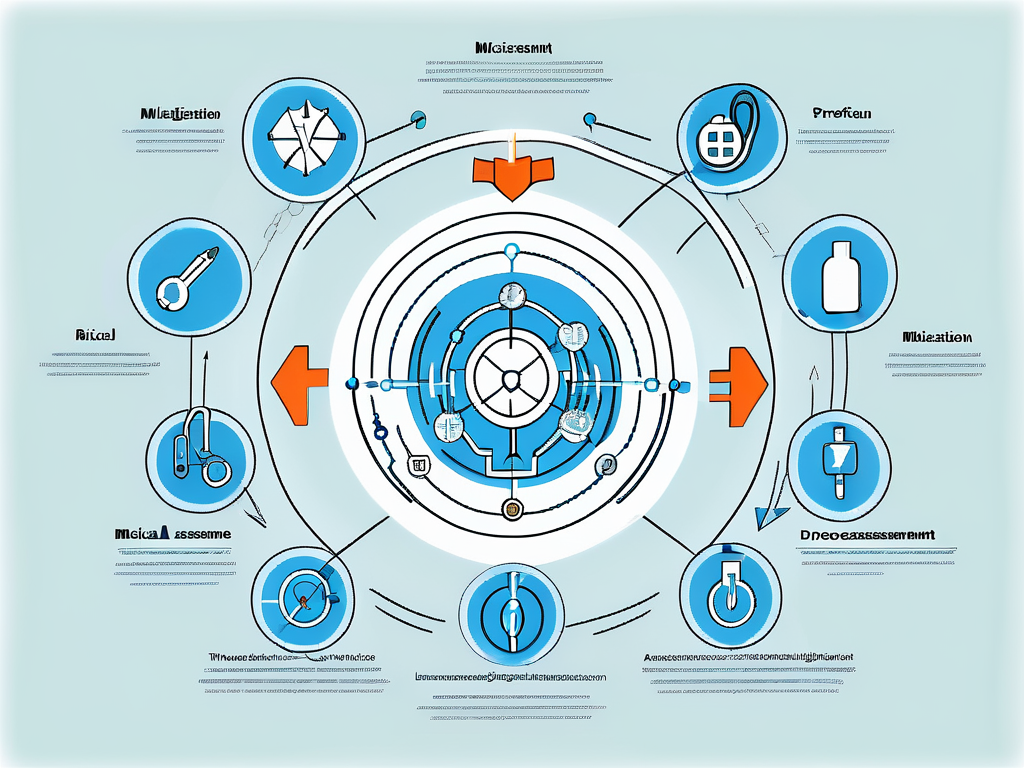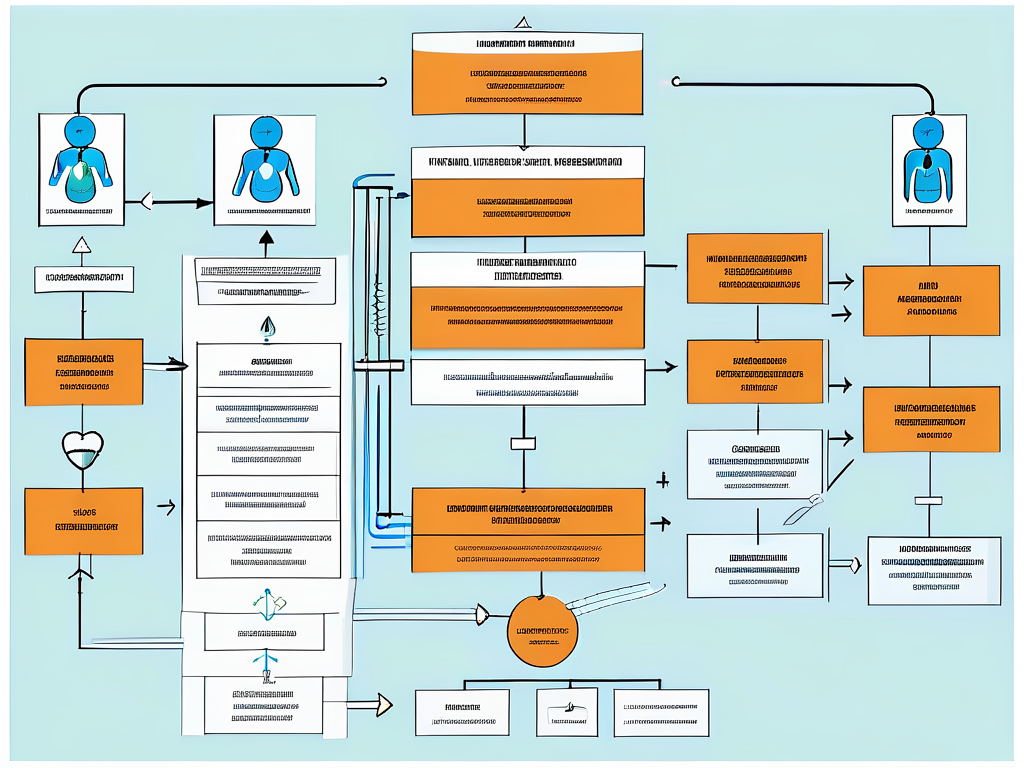Updated November 10, 2024
Understanding Threat Modeling
Definition and Importance of Threat Modeling
Threat modeling is a systematic approach to identifying and addressing potential security threats to a system. Picture it as a chess game—every move can shape the outcome. In medical devices, this means foreseeing how an attacker might exploit vulnerabilities. The stakes are incredibly high. Lives are on the line, and even a minor security oversight can lead to catastrophic consequences.

Understanding threat modeling is crucial. It is not just another box to tick on your compliance checklist. It is a proactive measure informing all stages of the development process. By anticipating threats early, teams can build stronger defenses and embed security into their devices’ DNA. This proactive stance enhances the devices’ resilience. It fosters a culture of security awareness among developers and stakeholders, encouraging them to think critically about potential risks at every stage of the product lifecycle.
Role of Threat Modeling in Medical Device Security
In the medical devices sector, security is non-negotiable. Threat modeling is pivotal, acting like a security guard outside a high-risk location. Its purpose? To assess and mitigate risks before they materialize. When teams engage in threat modeling, they examine every possible attack vector—network vulnerabilities, unauthorized physical access, or software exploits.
This eye for detail produces a roadmap, guiding teams through the murky waters of potential threats. It empowers developers and stakeholders to make informed decisions. Thus, the health and safety of patients are prioritized, and trust in medical technologies remains intact. Furthermore, threat modeling facilitates communication among multidisciplinary teams, including engineers, clinicians, and regulatory experts. Creating a shared understanding of security risks ensures that everyone is aligned on the security objectives and can collaborate effectively to implement solutions, ultimately leading to more robust and secure medical devices that can withstand the evolving landscape of cyber threats.
The Medical Device Lifecycle
Stages of the Medical Device Lifecycle
The lifecycle of a medical device is quite the journey. It starts with an idea, wanders through design and development, and continues to production, deployment, and eventual retirement. Each stage presents distinct challenges and opportunities. Incorporating threat modeling throughout this lifecycle is necessary for effective risk management.
From concept to commercialization, security should be at the forefront. Each phase has unique requirements, yet they all depend on a foundation built on rigorous threat assessment. A secure device by design is far more effective than one with security added as an afterthought. This proactive approach enhances the device’s reliability and builds trust among users and healthcare providers, which is crucial in the highly sensitive medical field.
Security Concerns at Each Stage
Ah, the intricacies of the medical device lifecycle! At the outset—during the design phase—threats like unauthorized data access or software vulnerabilities emerge. Skipping this step is akin to building a house on shaky ground. A solid foundation requires foresight. Conducting thorough risk assessments and employing design reviews can help identify potential vulnerabilities early on, ensuring that security measures are integrated seamlessly into the device’s architecture.
As we progress to the development stage, the risks shift. Coding errors can lead to security gaps. Ensuring developers are well-trained in secure coding practices is paramount. This training should include understanding common vulnerabilities, such as those outlined in the OWASP Top Ten, and how to mitigate them effectively. As we transition to production, one may need to ensure supply chain security. Components sourced from third parties can introduce vulnerabilities. Therefore, establishing stringent vetting processes for suppliers and conducting regular audits can help maintain the integrity of the supply chain.
Finally, in deployment and eventual retirement, considerations include software updates and proper disposal of sensitive data. Security is not simply a one-and-done deal; it’s a continuous journey. Regular software updates are essential to patch vulnerabilities that may be discovered post-deployment. Moreover, the retirement phase must be handled carefully, ensuring that all sensitive data is securely wiped or destroyed to prevent unauthorized access and potential breaches. This holistic approach to security throughout the lifecycle not only safeguards the device but also protects patient data and upholds the integrity of healthcare systems.
Best Practices for Integrating Threat Modeling
Planning for Threat Modeling Integration
You’ve seen the light and are ready to integrate threat modeling into your processes. Fantastic! First step? Planning. It’s crucial to set clear objectives. Determine what you want to achieve and how you’ll get there. Make it actionable.
Involve your team from the ground up. Effective communication fosters collaboration. Bring together engineers, quality assurance, and regulatory experts. Each brings a unique perspective and has skin in the game. With more voices at the table, your threat model will be more comprehensive.
Additionally, consider establishing a timeline for your integration process. A well-defined schedule can help maintain momentum and ensure everyone stays aligned with the objectives. Break down the integration into manageable phases, allowing for adjustments and refinements. This phased approach minimizes disruption and provides opportunities for early wins that can motivate the team and demonstrate the value of threat modeling to stakeholders.
Implementing Threat Modeling in Design and Development
Implementation is where the rubber meets the road. Integrate threat modeling activities into your design and development cycles. Involve security experts early and often. They will help identify potential issues based on envisioned attack scenarios. Brainstorming sessions can yield fresh insights.
Ensure that all teams use consistent methodologies. A patchwork of approaches can lead to confusion. Consistency breeds efficiency. Utilize tools that support collaborative threat modeling efforts. When everyone is on the same page, risks are reduced significantly.
Consider incorporating threat modeling into your agile sprints or development iterations. By embedding these practices into your regular workflow, you can ensure that security is a continuous focus rather than an afterthought. This proactive stance allows teams to address potential vulnerabilities in real-time, adapting to project scope or technology changes. Regularly scheduled threat modeling sessions can also serve as a knowledge-sharing platform, where team members can discuss recent threats or share lessons learned from previous projects.
Maintenance and Continuous Improvement of Threat Models
So, you’ve got your threat model up and running. But remember, it’s not a “set it and forget it” scenario. Just like a garden needs regular tending, threat models require ongoing care. Schedule regular reviews. Life is ever-changing, and threats evolve. New vulnerabilities surface as technology advances.
Solicit feedback from your team. Encourage an environment where questioning and revisiting security measures is routine. This culture shift can lead to innovation in threat management.
In addition to regular reviews, consider leveraging automated tools that can help monitor threats in real time. These tools can provide valuable insights and alerts about emerging vulnerabilities, allowing your team to respond swiftly. Furthermore, integrating threat intelligence feeds can enhance your understanding of the threat landscape, keeping your models relevant and informed. By fostering a culture of continuous learning and adaptation, you’ll improve your threat models and empower your team to stay ahead of potential risks in an ever-evolving digital world.
Common Pitfalls in Threat Modeling Integration
Overlooking Potential Threats
One common pitfall is becoming complacent. Neglecting to consider all potential threats can be detrimental. It’s easy to assume you’ve covered all bases, yet that complacency can open the door to unforeseen vulnerabilities. Always question your assumptions.

Encouraging teams to think outside the box can be beneficial. Brainstorming sessions that challenge norms can reveal overlooked threats. Remember, there is no “one size fits all” regarding threats. Additionally, incorporating diverse perspectives can enhance threat identification. Involving team members from various departments—such as operations, legal, and customer service—can uncover unique insights into potential risks that may not be immediately apparent to the core security team. This collaborative approach enriches the threat modeling process and fosters a culture of shared responsibility for security across the organization.
Inadequate Training and Expertise
Insufficient training can result in missteps. It’s like sending someone to navigate without a map. Ensure your teams are adequately trained in threat modeling techniques. Provide workshops, resources, and access to experts. Investing in your people’s knowledge is investing in your security posture.
Cross-training can also foster a more holistic understanding of cybersecurity. Developers who understand potential security implications will write better code—a win-win! Furthermore, creating a mentorship program can significantly enhance the skill set of less experienced team members. Pairing them with seasoned professionals allows for real-time knowledge transfer and practical insights into threat modeling. This builds confidence in the team and cultivates a more resilient security culture within the organization, where everyone feels empowered to contribute to the overall security strategy.
Neglecting Regular Updates and Reviews
Think of your threat model as a living document. Failing to update it is like using an outdated map. It’ll lead you astray. Regular updates and reviews are crucial. Not doing so can lead to gaps in coverage. Moreover, the landscape continuously shifts; new technologies and threats emerge.
Scheduling routine assessment checkpoints is prudent. Consider it a security check-up. Implement lessons learned from incidents to improve the model continuously. Ensure it evolves with the organization’s needs. Additionally, leveraging automated tools can streamline the update process, allowing for real-time threat landscape monitoring. These tools can provide alerts for emerging threats and vulnerabilities, ensuring that your threat model remains relevant and robust. Sharing threat intelligence with industry peers can also provide valuable insights into new threats that may affect your organization, further enhancing your model’s effectiveness.
Mitigating Risks and Enhancing Security
Proactive Measures for Threat Detection
Mitigation is about being proactive. Implement measures to detect threats early in the lifecycle. Use automated tools for vulnerability scanning. These solutions can provide insights that manual assessments might overlook.
Consider conducting red team exercises. Think of it as hiring a group of code ninjas to find your weaknesses. They can simulate attacks and reveal vulnerabilities. It helps provide real-world assessments of your defenses.
In addition to red team exercises, integrating continuous monitoring systems can further enhance your threat detection capabilities. These systems utilize advanced analytics and machine learning algorithms to identify unusual real-time patterns or behaviors, allowing immediate action before a potential breach escalates. By establishing a culture of vigilance, organizations can stay one step ahead of emerging threats, ensuring that their defenses are not only reactive but also adaptive to the evolving landscape of cybersecurity risks.
Response Strategies for Identified Threats
When a threat is identified, having a response strategy is non-negotiable. Strategies should encompass communication, containment, and recovery efforts. Practice these strategies like you would a fire drill.
Conduct tabletop exercises that put your plan to the test. Identify gaps in your response capabilities and make necessary adjustments. This proactive approach will bolster your security posture dramatically.
Establishing a clear chain of command during a security incident is crucial. Designate specific roles and responsibilities for team members to ensure a swift and organized response. This not only minimizes confusion but also enhances accountability. Regularly updating and reviewing your incident response plan in light of new threats and lessons learned from past incidents can significantly improve your organization’s resilience against future attacks, ensuring that your team is always prepared to act decisively.
Ensuring Compliance with Regulatory Standards
In the field of medical devices, compliance with regulatory standards is paramount. These regulations are designed to protect patient safety. Familiarize yourself with relevant standards, such as ISO 14971 and IEC 62304. Ensure that your threat modeling efforts align with these requirements.
Making compliance a part of your threat modeling approach creates a seamless integration of security and regulatory adherence. It shows a commitment to safety that both users and regulators will appreciate.
Additionally, staying informed about changes in regulatory requirements is essential for maintaining compliance. Engage in continuous education and training for your team to ensure everyone knows the latest standards and best practices. Collaborating with industry experts and participating in forums can provide valuable insights into emerging trends and potential regulatory shifts. This proactive engagement strengthens your compliance efforts and fosters a culture of security awareness throughout your organization, ultimately benefiting your products and customers.
The Future of Threat Modeling in Medical Device Lifecycle
Emerging Trends and Technologies
As we look to the horizon, emerging trends in technology promise to reshape threat modeling. The advent of artificial intelligence and machine learning can enhance predictive analytics. These innovations allow for more effective identification of potential threats before they manifest. By leveraging vast datasets, AI algorithms can detect patterns and anomalies that human analysts might overlook, significantly improving the accuracy of threat assessments.
Another trend is the push toward real-time threat modeling. Imagine assessing risks dynamically as changes occur in the device environment. This agility can make a world of difference in maintaining security. With the integration of IoT devices in healthcare, real-time monitoring becomes crucial. Devices can communicate their status and any anomalies directly to security systems, enabling immediate responses to potential threats. This proactive approach not only safeguards patient data but also enhances the overall reliability of medical devices.
Challenges and Opportunities Ahead
Of course, with every change comes challenges. The complexity of new technologies can make integration difficult. However, these hurdles present growth opportunities. The evolving landscape demands more sophisticated approaches, ensuring security remains at the forefront. For instance, the need for cross-disciplinary collaboration is more critical than ever. Engineers, cybersecurity experts, and healthcare professionals must work together to create comprehensive threat models that address the multifaceted nature of medical device security.
Embrace these challenges as opportunities for innovation. As professionals in the medical device industry, staying one step ahead means constantly adapting and improving. Remember, security is not a destination; it’s a journey. Let’s make it an exciting one! Moreover, as regulatory bodies evolve to keep pace with technological advancements, there will be an increased emphasis on compliance and best practices. This shift will enhance patient safety and foster a culture of accountability within organizations. By prioritizing security from the design phase to deployment and beyond, we can ensure that medical devices meet and exceed regulatory standards, setting a new benchmark for the industry.
Conclusion
Integrating robust threat modeling and cybersecurity measures is paramount as the medical device industry evolves. Blue Goat Cyber stands at the forefront of this evolution, offering comprehensive services tailored to your needs. Our expertise in risk management and secure development practices, combined with our commitment to building lasting partnerships, ensures that your medical devices comply with FDA regulations and are fortified against the ever-changing landscape of cyber threats. Don’t let cybersecurity challenges hinder your progress. Contact us today for cybersecurity help and take the first step towards securing your medical devices with a trusted Veteran-Owned partner. Schedule a Discovery Session with Blue Goat Cyber and let us help you navigate the complexities of medical device cybersecurity with confidence and precision.


